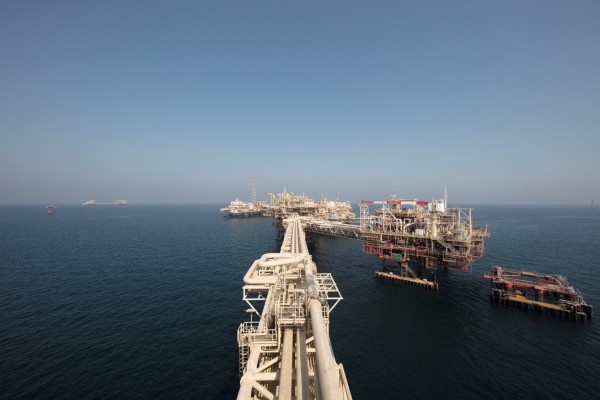ID :
482801
Wed, 02/28/2018 - 13:18
Auther :
Shortlink :
https://www.oananews.org//node/482801
The shortlink copeid
Middle East to remain largest oil exporting region: Report

LONDON, 27th February, 2018 (WAM) – By 2040, the Middle East will remain a large net energy exporter and the world’s largest oil exporting region, but it will lose share as an LNG exporter, according to the 2018 BP Energy Outlook.
The publication, which outlines the view of oil major BP of future global energy supply and demand through to 2040, predicts that, by that date, ''The Middle East remains the largest oil producer and the second largest gas producer, accounting for over 34 percent of global liquids production and 20 percent of gas production
by 2040."
It suggested that "Non-fossil fuels account for 8 percent of the Middle East’s energy consumption in 2040, compared with 1 percent today. Natural gas represents almost 60 percent of the incremental energy demand growth, and it accounts for 54 percent of the region’s energy consumption by 2040, against 52 percent today.''
''This rising prosperity drives an increase in global energy demand, although the extent of this growth is offset by accelerating gains in energy efficiency: energy demand increases by only around one third over the next 25 year,'' the annual report noted.
Highlights of the report’s predictions include the following highlights:
-Middle East energy consumption increases by 54 percent by 2040, with natural gas representing almost 60 percent of that growth. Oil and coal both lose share at the expense of gas and non-fossil fuels. The contribution of non-fossil fuels increases from 1 percent today to 8 percent in 2040, led by strong growth in solar, wind (each over 20 per cent per annum) and nuclear (15 per cent p.a.). Still, by 2040, solar energy will represent only 4 per cent of total energy demand.
-Natural gas consumption is expected to grow by 2 percent p.a. and oil consumption by 1.1 percent p.a., slightly faster than the global average of 1.6 percent p.a. and 0.5 per cent p.a., respectively.
-Oil’s share in the total energy mix is predicted to fall from 47 percent to 37 percent. Non-combusted energy demand will be the fastest growing sector at 3.1 percent p.a., while industry will remain the largest consuming sector, representing 37 percent of primary energy demand by 2040. Energy consumed in power generation to expected to increase by 1.7 percent p.a. from 2016 to 2040. Oil’s share in power generation will decline from 30 percent to 12 per cent, as the share of non-fossil fuels rises from 2 percent to 24 percent.
-Energy intensity is projected to fall by 21 percent by 2040, but the region is expected still to be almost twice as energy intensive as the world’s average. Energy consumption per capita is predicted to reach OECD levels by 2040.
-Liquids production is expected to increase by 5 Mb/d over the period to reach over 37 Mb/d by 2040, over one third of global liquids output. Conventional oil production is predicted to rise to 29 Mb/d by 2040 from 26 Mb/d in 2016, with production of NGLs expected to rise to 6 Mb/d and condensate to 2 Mb/d by 2040. Natural gas production is predicted to increase by 60 per cent over the period.
-The Middle East region is expected to remain the largest LNG exporter throughout the period, representing 25 percent of global LNG exports by 2040, down from 35 percent of the total in 2016. Pipeline exports to other regions are expected to rise to 3 Bcf/d by 2040.
The BP Energy Outlook examines the forces shaping the global energy transition between now and 2040 as well as the key uncertainties surrounding that transition. Rising prosperity is expected to drive an increase in global energy demand, with the report reviewing ways in which demand will be met over the coming decades through a diverse range of supplies including oil, gas, coal and renewables.





